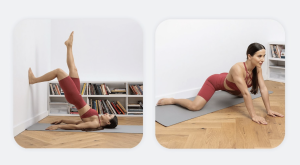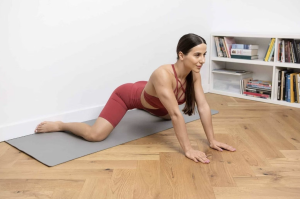Pilates, a fitness regimen developed by Joseph Pilates in the early 20th century, has gained immense popularity for its holistic approach to physical well-being. This low-impact exercise program focuses on improving flexibility, strength, and endurance without putting excessive stress on joints. In this article, we will delve into the key aspects of Pilates, exploring its history, principles, and the diverse range of exercises it encompasses. Additionally, we will incorporate insights from the BetterMe Pilates program to provide a comprehensive review.
History of Pilates:
Joseph Pilates, a German physical trainer, devised the Pilates method in the 1920s. Initially called “Contrology,” Pilates was developed as a system of exercises to enhance the physical and mental well-being of practitioners. The method gained recognition among dancers for its ability to improve strength and flexibility while aiding in injury prevention and rehabilitation. Over the years, Pilates has evolved and adapted to different fitness needs, making it a popular choice for people of all ages and fitness levels.
Principles of Pilates:
Pilates is grounded in six key principles that guide its practice.
BetterMe Pilates Review emphasizes the integration of these principles into its program, highlighting their importance for optimal results.
- Centering: Pilates emphasizes the importance of initiating movement from the body’s center, also known as the “powerhouse” or core. This helps in building a strong foundation for overall body strength and stability.
- Concentration: Each Pilates exercise requires focused attention to movement and breath. Concentrating on the task at hand enhances body awareness and promotes better results.
- Control: Central to the Pilates philosophy is the concept of control over movements. Practitioners are encouraged to move with precision and fluidity, avoiding unnecessary strain.
- Precision: Pilates exercises are designed with specific, deliberate movements. Precision in execution ensures that the targeted muscles are engaged, leading to effective results.
- Breath: Proper breathing is integral to Pilates. The emphasis on mindful breathing enhances oxygen flow, aids in relaxation, and supports the execution of movements.
- Flow: Pilates encourages a seamless flow of movement from one exercise to the next. This principle promotes grace and fluidity, enhancing overall body coordination.

BetterMe Pilates Review:
BetterMe Pilates, a popular program in the realm of fitness apps, incorporates the fundamental principles of Pilates into its structure. Users have reported positive experiences with the program, praising its user-friendly interface and well-designed workouts that cater to varying fitness levels. The
BetterMe Pilates Review underscores the effectiveness of the program in providing a guided and personalized Pilates experience, making it accessible for beginners and challenging for those with advanced fitness levels.
Pilates Exercises:
Pilates offers a diverse range of exercises that can be performed on a mat or specialized equipment such as the Reformer, Cadillac, and Wunda Chair. Mat exercises typically use body weight for resistance, while the equipment-based exercises incorporate spring resistance to add intensity.
Common Pilates exercises include:
- The Hundred: A dynamic exercise targeting core strength and endurance.
- Rolling Like a Ball: Focused on spinal flexibility and abdominal control.
- The Swan Dive: A back extension exercise promoting spinal mobility and strength.
- Leg Circles: A mat exercise for hip mobility and stability.
- Reformer Series: Utilizing the Reformer machine for a wide range of exercises targeting various muscle groups.

Benefits of Pilates:
- Improved Core Strength: Pilates places a strong emphasis on core engagement, leading to enhanced abdominal and back strength.
- Increased Flexibility: Regular practice of Pilates promotes flexibility by targeting and stretching various muscle groups.
- Enhanced Posture: Pilates exercises emphasize proper alignment, helping improve overall posture and reduce the risk of musculoskeletal issues.
- Injury Prevention and Rehabilitation: The controlled and low-impact nature of Pilates makes it a valuable tool for preventing injuries and supporting rehabilitation from various conditions.
- Mind-Body Connection: The mindful approach to movement in Pilates fosters a strong connection between the mind and body, promoting overall well-being.
Pilates stands as a versatile and effective exercise program, offering a holistic approach to physical fitness and well-being. Its principles, exercises, and numerous benefits make it suitable for individuals seeking a balanced and mindful approach to fitness. Whether you are a beginner or an experienced fitness enthusiast, Pilates provides a pathway to improved strength, flexibility, and overall health. Consider incorporating Pilates into your fitness routine and experience the transformative effects of this time-tested method, with BetterMe Pilates serving as a valuable companion on your fitness journey.


